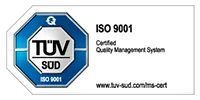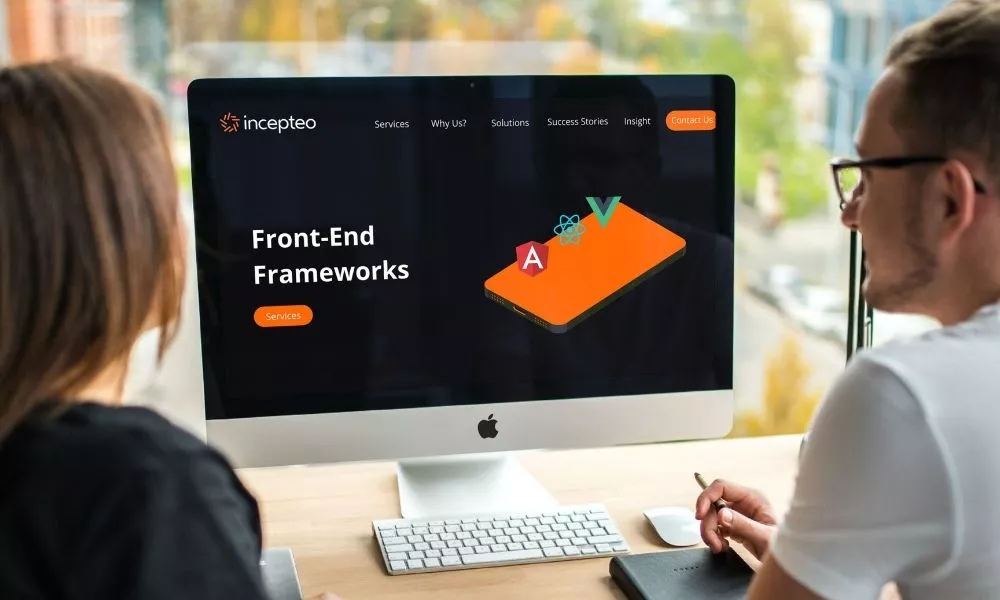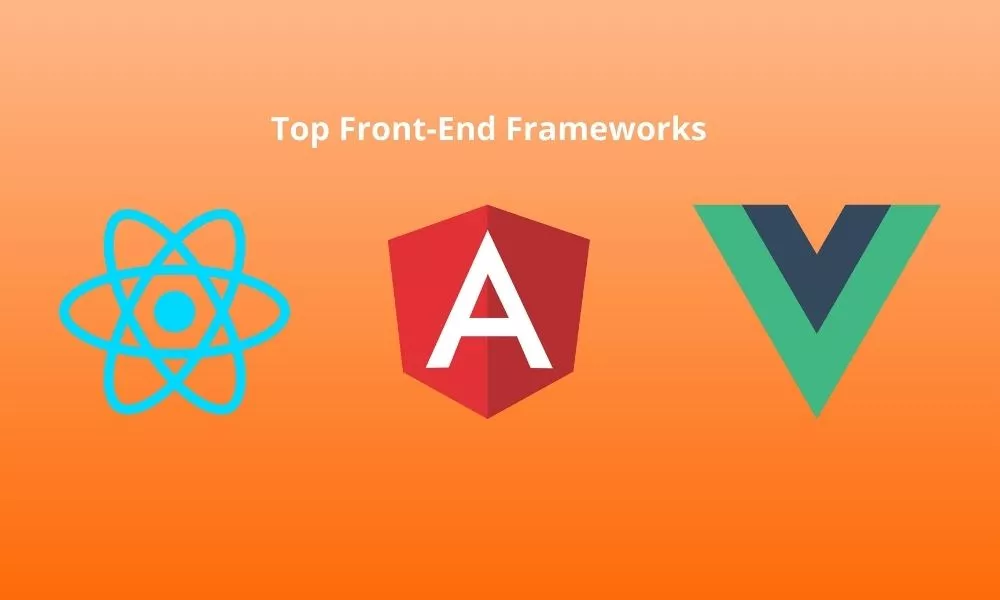React vs Angular vs Vue | Best front-end framework for you?
- Blog React vs Angular vs Vue: Which front-end framework is best for you?




React vs Angular vs Vue: Which front-end framework is best for you?
React vs Angular vs Vue: Which front-end framework is best for you?
It can sometimes seem like the easy option to go with the flow, so when you see so many other developers using a particular front-end framework, why wouldn’t you? The reality is, you need to be clear about what you want to achieve and then choose the right framework for your project.
We’ll look at three of the most popular front-end frameworks for web development and, help you get to the bottom of what each one offers providing you with clarity on why you would choose one over the others.
The role of a front-end framework
Front-end frameworks are responsible for building the “front of house” of your website, what the user actually sees. With 1.8 billion websites currently in existence, the process of creating a website that works seamlessly and keeps the user interacting with it, must be taken seriously. If you fear it isn’t doing that job, then it’s time to regenerate.
The importance of your website makes selecting the right front-end framework all the more critical, but there’s a lot to consider and to understand with regards to the potential advantages and disadvantages of each, and how they affect aspects such as speed and compatibility with other technologies.
Angular, React and Vue continue to be three of the most popular front-end frameworks for web development so we will dig a little deeper into each one to understand the choices they offer.
What is Angular?
Angular is a TypeScript-based framework from Google for building web, mobile and desktop applications. Thanks to its MVC structure, Angular can split tasks into logical chunks, reducing the initial load time of a webpage. The MVC model also allows separation of concerns, with the view part being visible on the client side, drastically reducing queries in the background. Also, communication with this tool works in an asynchronous mode, meaning that fewer calls to the server are performed
What is React?
Developed by Facebook, React was initially released in 2013. React is a front-end library used to create stateful and reusable UI components. It allows developers to create large web applications that can change data without reloading the page. The purpose of React is to be simple, scalable, and fast. Being, in effect, a front-end library, it doesn’t implement the MVC template in its completeness but you can, however, consider it the view part of it. This library has quickly become famous for its impressive speed.
What is Vue?
Vue.js is a progressive framework for building user interfaces. In contrast to a monolithic framework like Angular, Vue has been built to be incrementally adoptable for users with the ability to create efficient, fast, and sophisticated single-page applications. Vue is an exceptionally fast tool, and at an incredibly small 18KB file size after zipping, this technology will probably have a long life ahead of it.
Choosing the right framework
Understanding what each framework offers provides insight into when to choose it, although this can still be a daunting task. However, there are a few distinctions that can be made between, Angular, React and Vue that make them more suitable to particular tasks.
Choosing Angular
Applications that can benefit from using Angular are:
- Apps with very dynamic content:Because of its structure and efficient data binding, Angular is useful for applications where you need to change the displayed content dynamically, based on user behaviour. Angular will make sure that once a component is changed, every other related component linked to it will immediately update.
- Very large, enterprise-grade applications:Its core structure and the tools it provides make it a great framework for large applications.Angular may not be the best choice for small-sized static pages. Due to its monolithic structure, this framework doesn’t work well in these instances as it adds overhead, subsequently reducing overall performance.
Choosing React
This framework can provide many advantages when dealing with:
- Applications that require speed:Designed with performance in mind and support for the virtual DOM.
- Applications that require versatility:You can use React anywhere without sacrificing performance, so you don’t have to use any tricks to make it work on different platforms. You will also have the framework ecosystem backing you with the likes of React Native for mobile app development.
- General websites that require good SEO:React’s speed and general performance can contribute to better SEO in the eyes of Google by providing a better user experience.
- Suitable for an international audience:Many projects today are geared toward a global audience, which means you will have people accessing your application with hardware and internet connections of varying speeds and capacities. Faster apps that use React can help you bring your product to different geographies that may have limited bandwidth or hardware capabilities.
Choosing Vue
This relatively newly-created framework proves useful in a number of situations:
- Applications that require speed:Vue.js applications tend to be extremely fast and can improve your project speed.
- When you need very lightweight applications: Providing advantages that include better performance for machines with limited resources, improved accessibility for people with slower connections, and a better overall experience for the users.
- When you want to integrate a framework into an existing app: This can be easily and progressively done with sacrificing your application performance and only using exactly what you need. This saves time and money in the long run, making Vue an efficient tool for start-ups and for growing ideas.
- Suitable for an international audience:Speed and lightness will give international users with limited internet speed more possibilities to benefit from your product.
Building a framework for the future
The range and capabilities of technologies at our disposal today is both exciting and overwhelming. The transformative power of technology presents a world of opportunity but without the specialist knowledge and experience or the entrepreneurial approach to push the boundaries, it rarely delivers to its full potential.
Understanding that there’s a difference in front-end frameworks enables developers to begin making the right choice for their projects. But the real value comes from understanding how what you develop today can lay the foundations for longer term business strategy.
At Incepteo we’ve worked with many clients and our approach, using The Project Triangle: A framework for delivering successful digital products, provides a shared understanding of how to work successfully in partnerships with clients to deliver products that are built with the long term in mind.
Technology is the differentiator for many businesses, and we add value for our clients by sharing our expertise and experience in working with many partners, differing in size and sector, to develop software and to make the most of existing products to deliver excellent, bespoke solutions.
Share this:
Recent Posts
- Strategic Engagement Models with Technology Service Companies: The Incepteo Approach
- The CTO Advisory: Why Your Startup Needs Expert Technology Guidance
- AI Development Predictions 2024: Anticipating the Next Phase of Innovation
- Revolutionizing Mobile App Development 9 Innovative Technologies Leading the Change
- Ensuring Mobile App Security: 7 Vital Measures Every Developer Should Implement
By Sector

How Can Incepteo Help You?


Quick Links
AI SERVICES
2024 © All rights reserved by Incepteo

